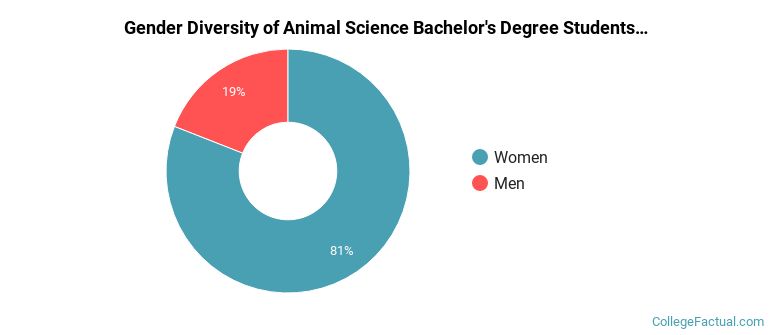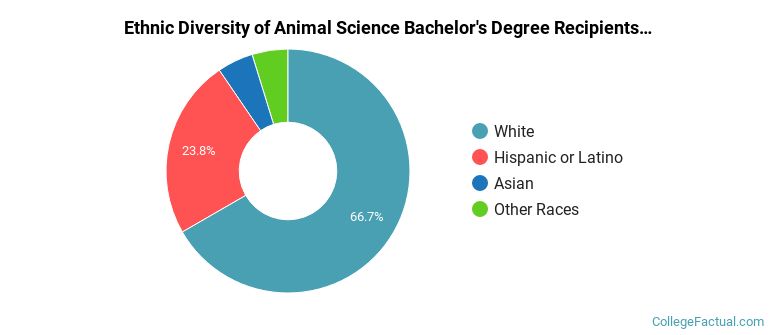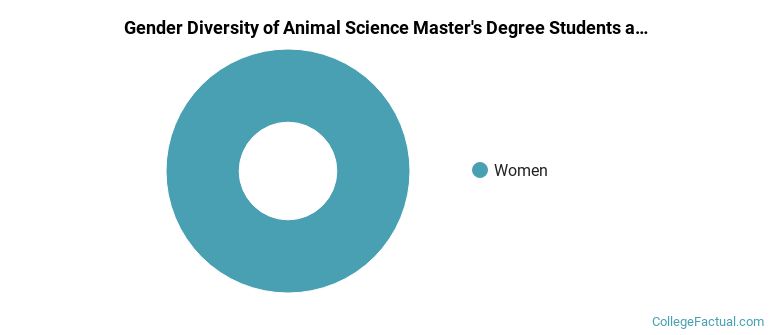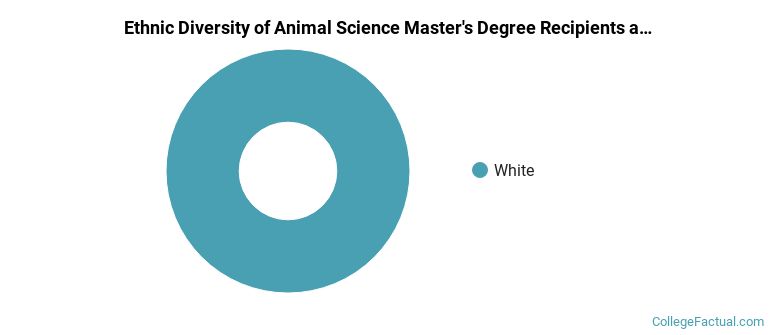 by our College Data Analytics Team
by our College Data Analytics TeamWe've gathered data and other essential information about the program, such as the average salary of graduates, ethnicity of students, how many students graduated in recent times, and more. We've also included details on how UMass Amherst ranks compared to other colleges offering a major in animal science.
Jump to any of the following sections:
The bachelor's program at UMass Amherst was ranked #34 on College Factual's Best Schools for animal science list. It is also ranked #1 in Massachusetts.
| Ranking Type | Rank |
|---|---|
| Best Animal Science Bachelor’s Degree Schools | 33 |
| Best Animal Science Schools | 34 |
During the 2021-2022 academic year, University of Massachusetts Amherst handed out 21 bachelor's degrees in animal science. This is an increase of 17% over the previous year when 18 degrees were handed out.
In 2022, 3 students received their master’s degree in animal science from UMass Amherst. This makes it the #40 most popular school for animal science master’s degree candidates in the country.
In addition, 1 students received their doctoral degrees in animal science in 2022, making the school the #31 most popular school in the United States for this category of students.
The median salary of animal science students who receive their bachelor's degree at UMass Amherst is $40,008. This is higher than $34,062, which is the national median for all animal science bachelor's degree recipients.

During the 2022-2023 academic year, part-time undergraduate students at UMass Amherst paid an average of $1,605 per credit hour if they came to the school from out-of-state. In-state students paid a discounted rate of $691 per credit hour. The average full-time tuition and fees for undergraduates are shown in the table below.
| In State | Out of State | |
|---|---|---|
| Tuition | $16,591 | $38,527 |
| Fees | $766 | $766 |
| Books and Supplies | $1,000 | $1,000 |
| On Campus Room and Board | $14,869 | $14,869 |
| On Campus Other Expenses | $1,440 | $1,440 |
Learn more about UMass Amherst tuition and fees.
For the most recent academic year available, 19% of animal science bachelor's degrees went to men and 81% went to women.

The majority of the students with this major are white. About 67% of 2022 graduates were in this category.
The following table and chart show the ethnic background for students who recently graduated from University of Massachusetts Amherst with a bachelor's in animal science.

| Ethnic Background | Number of Students |
|---|---|
| Asian | 1 |
| Black or African American | 0 |
| Hispanic or Latino | 5 |
| White | 14 |
| Non-Resident Aliens | 0 |
| Other Races | 1 |
UMass Amherst does not offer an online option for its animal science bachelor’s degree program at this time. To see if the school offers distance learning options in other areas, visit the UMass Amherst Online Learning page.
All of the 2 students who graduated with a Master’s in animal science from UMass Amherst in 2022 were women.

The majority of master's degree recipients in this major at UMass Amherst are white. In the most recent graduating class for which data is available, 100% of students fell into this category.
The following table and chart show the ethnic background for students who recently graduated from University of Massachusetts Amherst with a master's in animal science.

| Ethnic Background | Number of Students |
|---|---|
| Asian | 0 |
| Black or African American | 0 |
| Hispanic or Latino | 0 |
| White | 2 |
| Non-Resident Aliens | 0 |
| Other Races | 0 |
Take a look at the following statistics related to the make-up of the animal science majors at University of Massachusetts Amherst.
| Related Major | Annual Graduates |
|---|---|
| Agriculture/Veterinary Preparatory Programs | 82 |
| Agricultural Production | 61 |
| Food Science Technology | 37 |
| Horticulture | 20 |
| Plant Sciences | 16 |
More about our data sources and methodologies.